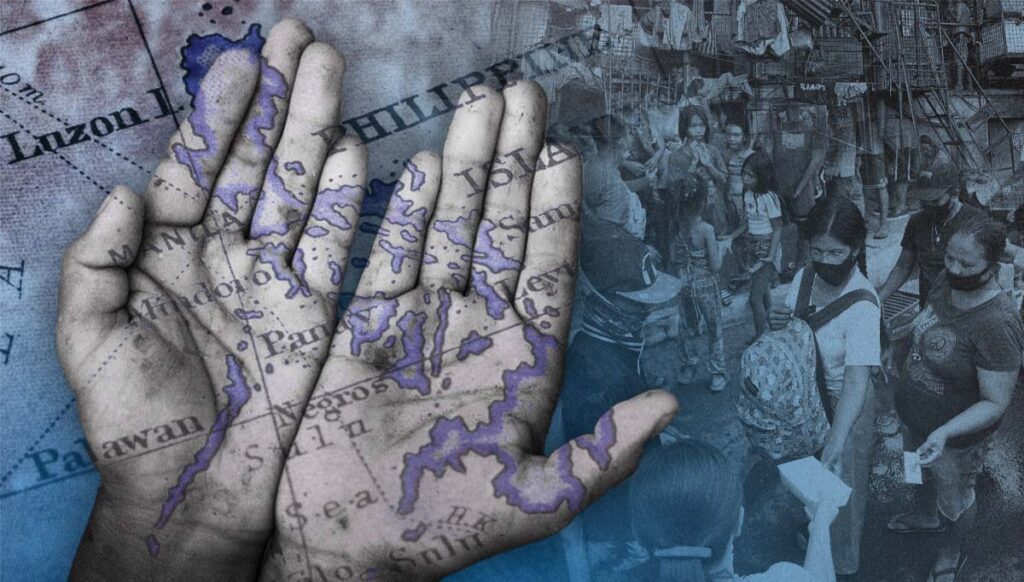Poverty incidence in Central Visayas drops in 2023

CEBU CITY, Philippines — Central Visayas is gradually returning to its pre-pandemic level conditions, after the poverty statistics showed a decline of the poor population in the region, the National Economic and Development Authority (Neda) said.
This was based on the results of the 2023 Official Poverty Statistics Survey reported by the Philippine Statistics Authority Central Visayas (PSA-7) last October 25.
The poverty incidence in Central Visayas for 2023 was estimated at 12.3 percent which meant that 12 out of 100 families had incomes below the amount needed to buy the basic foods and needs, said Engineer Leopoldo Alfanta, Jr., chief statistical specialist of PSA-7 during a dissemination forum last October 25.
The figure was lower compared to the 22 percent in 2021.
READ MORE;
Inflation rate in Cebu: Your P1 is now worth 83 centavos
Poverty as defined by the poor
Poverty population
The number of poor families in Central Visayas was estimated at 206,660 families, lower than 354,040 in 2021; and higher than the 181,000 families in 2018.
Of the number, there are 14.8 percent poor families in Bohol and 11.7 percent in Cebu.
In Cebu Province, excluding the highly urbanized cities, the number is equated to 131,500 families in 2023.
For highly urbanized cities, Cebu City has 12,820 poor families, Lapu-Lapu City has 7,370; and Mandaue City has 5,780.
Neda said that the 2023 figures had shown a gradual return or recovery from the pre-pandemic level. The height of the pandemic was observed in 2020-2021.
Neil Andrew Menjares, Neda-7 chief economic development specialist, said in a statement that the 2023 results revealed a ‘significant progress’ in terms of poverty in the region especially in the recovery process from the Covid-19 pandemic in December 2021.
“Central Visayas is moving in the right direction towards the vision of the Filipino people of a prosperous, predominantly middle-class society where no one is poor,” Neda-7 said in a separate press briefer.
Meanwhile, the poverty incidence among population was 17.3 percent in 2023 to which Neda said that it ‘exceeded the Central Visayas Regional Development Plan (CV-RDP) 2023 target of 23.5 percent, surpassing it by 6.2 percentage points and bringing the region closer to its 2025 target of 17.1 percent, placing the region ahead of schedule.’
This means that 1.16 million of the population in Region 7 have incomes below the poverty threshold.
Average income needed
In Cebu Province (excluding the highly urbanized cities [HUCs]) there are a total of 751,260 people who are poor.
In HUCs, Cebu City has 75,450; Mandaue City has 29,090; and Lapu-Lapu City has 42,130, according to the presentation of Alfanta.
He said that in 2023, a family of five in Region 7 needed at least P14,397 per month to avail the basic foods and non-foods requirements.
Those families, who have income below the threshold, are considered in poverty, Alfanta said.
It increased by 6.6 percent from the poverty threshold in 2021 at P13,510.
The poverty threshold in Cebu for 2023 was P14,835 and in Bohol was P12,909.
The poor are individuals and families whose income fall below the poverty threshold as defined by the National Economic Development Authority (Neda), (those) who cannot afford in a sustained manner to provide their minimum basic needs of food, health, education, housing, and other essential amenities, according to Driesch Lucien Cortel, PSA senior statistical specialist.
The statistics, she said, was vital for the decision-making of the government and the private sector.
The poverty statistics was studied through the following data: provincial food bundles (from the Food and Nutrition Research Institute); prices of food items, and family income from the PSA data.
Poverty threshold is the minimum income needed for a family or individual to meet the basic food and non-food requirements.
The basic non-food requirements include clothing and footwear; fuel, light, and water; housing maintenance and other minor repairs; rental; medical care; education; transportation and communication; non-durable furnishing; household operations; and personal care and effects.
Meanwhile, the 2023 Family Income and Expenditure Survey also revealed that from January to December, the average family income in the Philippines in 2023 was estimated at P353,230 which is higher by 15.01 percent from the P307,190 in 2021.
The average annual family expenditure was P258,050 in 2023 which is 8.1 percent higher from the P228,800 in 2021.
In Central Visayas, the annual family income in 2023 was P326,940.
Disclaimer: The comments uploaded on this site do not necessarily represent or reflect the views of management and owner of Cebudailynews. We reserve the right to exclude comments that we deem to be inconsistent with our editorial standards.
